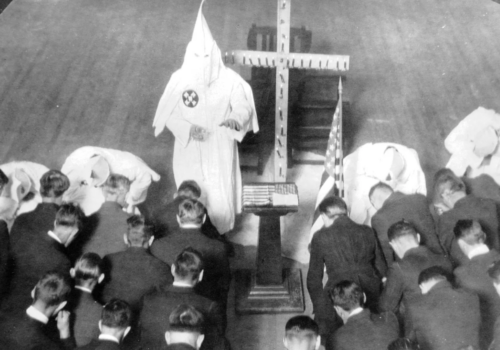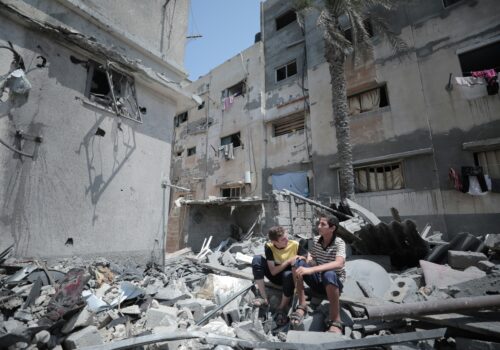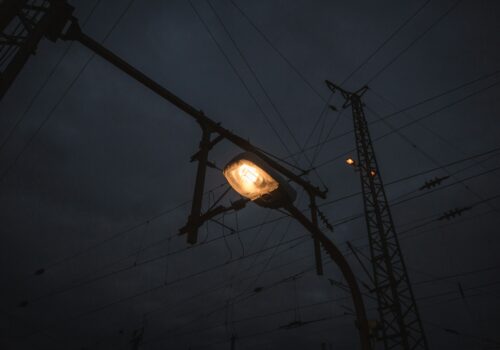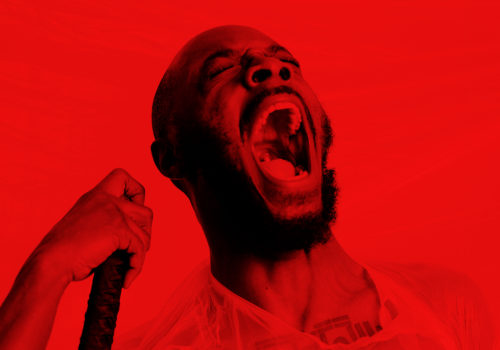Saving Tolka Park: The past, present and possible future of a Dublin institution
Words: Eva O’Beirne
Photography and videography: Save Tolka Park
Since 1924, Tolka Park has been an epicentre of Dublin culture. Now in 2022, fans and activists are fighting to save it.
The Past
As a stadium, Tolka has a proud legacy. It hosted the first floodlit football match in the Republic of Ireland in 1953, it was the venue for the first televised League of Ireland game in 1997 and became the first all-seater stadium in domestic football in 1999. It was also the venue for the first Women’s National League match in 2019.
The ground where Tolka Park resides is connected to some of the earliest instances of football in Ireland. In the late 1800s century, the Drumcondra-Botanic club was formed at a meeting on the waterfront where the Riverside stand rises today.
But Tolka is currently best known for its relationship with Shelbourne F.C. The stadium in Drumcondra has been their men’s team’s permanent home since 1978 and, since 2020, has also housed the club’s successful women’s team, who are the current national league champions.
The grounds have become a spiritual home for the club’s vibrant fanbase – who have purchased a record number of season tickets for this year. Speaking to District, Gavin White, Media Officer for Shels, detailed the club’s iconic community spirit and attachment to the area.
“Officially since 1989, Shels have had their home in the ground and certainly our greatest memories have been made in Tolka,” says Gavin. “Nights like the one in 1993 where we played FC Karpaty Lviv in our first European game in 30 years. You can spend days talking about each iconic game that has taken place there.”
Gavin comments on how football facilities need to be improved across Ireland, paying particular attention to Drogheda and Dundalk. But what he has noticed is the gradual erosion of cultural spaces in Ireland too: “From my point of view, there is a worrying trend of spaces, in general, being shut down. You look at places like the Cobblestone and other cultural hubs in Dublin that are under threat.” This issue is important to Gavin and other Shelbourne fans due to the large numbers of artists, musicians and creatives in the fanbase.
He also outlines that the club now has a fully-functioning bar that will help support creatives within the fanbase such as the acclaimed For Those I Love, who has previously made a music video using the grounds as the backdrop.
As for football in Ireland, Gavin notes the “huge swell of demand” for the sport. He points to the alienation of the English premier league and a longing to connect with Irish culture as two of the major reasons why this has occurred. The amount of season tickets has doubled since 2020.

I think people starting to realise the beauty and importance of going to these games. It isn’t just about seeing some football, you’re connecting with the community.
Gavin White, Shelbourne F.C
When asked what Irish football needs to survive and to keep expanding, Gavin has a very simple yet complicated answer. “We need the league to be a full industry,” he says. “From full-time players to full-time staff. You need full-time marketers, venues, all of it, as well as the commercial partnerships and government support.”
Shelbourne’s dedication to creating spaces for everyone is also apparent and needs funding to make sure that it continues into the future. Gavin is particularly proud of the achievements made by the club’s female players, noting how he hopes that this element of the club will continue to thrive as the years go on.

Tolka Park has been used for more than sports, marking it as a venue of wider cultural importance for Dublin.
In 1931, a programme of music and dance took place there as part of Wolfe Tone Week. A charity fête in 1933 featured such diverse events as a story-telling contest and a fairy cycle race. A Tolka Park Carnival took place in 1937 which featured bumper cars, a ghost train and donkey rides. Other attractions included palm, boat rides and a dog show.

The Present
Currently, activists are racing against an unknown amount of time to save and improve the grounds. Founded nearly a year ago, the Save Tolka Park campaign has researched and published a report on how the stadium can be saved, as well as hosted a gig to raise awareness around the topic.
Donnachadh from the Save Tolka Park team spoke to District about the importance of Tolka Park as a cultural hub and the role it could play in Dublin’s culture if saved: “When you lose a place like Tolka even if it were to be replaced with a greenfield site, which it isn’t, you remove its use as a cultural hub. You don’t get the same use of a stadium if you move it to the outskirts of the city, a good 40 minutes away. These grounds are precious, Richmond, Dalymount and Tolka. They should all be treasured.”
If Tolka Park were to go completely, Donnachadh believes that the sentimental and cultural loss would be immeasurable. “It is impossible to not be moved when people come forward to tell their stories about Tolka. People who live in the area, people who used to watch the games and play in the grounds. There are memories from each generation, right up until the 2000s.”
There’s people who have plaques for family members who have passed away. Dads, uncles and grandads who’ve played and gone. There are people whose ashes have been spread in Tolka.
Save Tolka Park
According to Donnachadh, the movement has “snowballed” since 2016. “There was an agreement reached between the then chairman and the board of Shels to move the club to Dalymount Park. It was met with a lot of backlash at the time and there was a boycott for a year.”
“From that point, both supporters and people who lived locally and had an interest in the park started their own work. Researching architecture, how to preserve the park that’s falling down. The prevailing narrative was that it couldn’t be saved.”
But Donnachadh emphasises that this isn’t the case. Three-quarters of the ground is fully functional and hosted its largest crowd in 15 years in February. “We’ve stuck to words like renovation instead of redevelopment, because redevelopment is a very broad term that includes knocking structures down and replacing them,” Donnachadh explains.
“Once we saw that there was a real possibility to put forward an argument for saving the park and take on the other angles of community use, we formed our own group that’s separate from the football club.”
Donnachadh underlines how the appetite for domestic football is on an upward trajectory. For Tolka Park to go, it would immediately hinder the ability for Dublin to host games. He also comments briefly on the juxtaposition between Dubliners wanting to have somewhere to live but also preserve their cultural hubs and venue: “It’s a misrepresentation of what’s happening. You can’t say that every cultural space needs to fall to make way for housing. No one would conceive of putting apartments on Croke Park for example.”
“When we first started campaigning, there was a lot of questions about the housing issues within Dublin and we’ve tried to explain that in Drumcondra, it is becoming a very built-up area. There are developments on the Clonliffe Road, on Griffith Avenue and even 400 yards from Tolka Park, planning permission has been sought for a ten-storey apartment block.”
Significant housing development in recent years, along with more currently planned in
Save Tolka Park
the surrounding areas, means that the need for retention and improvement of sporting
and community facilities has never been greater
Under the current proposal by Save Tolka Park, they have designed a plan for the grounds to become a 6,640-seater, high quality, UEFA category 3 stadium with a hybrid playing surface and modern community facilities to serve the broader community.
The plan details how the park’s football and club facilities can be expanded to contain dressing rooms, offices, a club shop and storage units. Under this, a gym, a crèche, café, enterprise centre, public toilets and catering facilities will also be incorporated into the stadium.
You can check out the Save Tolka Park campaign here.
You can read their proposal here.
The Future
So what happens next? Good question.
Only three weeks ago, members of Shelbourne F.C. sent a proposal to Dublin City Council (DCC) to redevelop the park as a multi-sport stadium.
Earmarked as a potential space for housing development, campaigners and fans alike are racing against a non-existent clock to save Tolka, unaware of what decision the city council could make without consulting them.
“Dublin City Council officials met with Shelbourne Football Club Board members today and a proposal submitted by the club to purchase Tolka Park Football Stadium from the City Council and redevelop it into a multi-sport stadium was discussed,” reads the council’s statement on the talks.
“Dublin City Council has agreed in good faith to examine the proposal in detail and will reconvene meetings with the Board of Shelbourne FC when further detail has been provided, which is expected to be received from Shelbourne FC within the next two weeks. The City Council will then carry out its due diligence on the proposal.”
In the statement, DCC refers to its purchase of Tolka Park and Dalymount Park, home of Bohemians, in 2016, with a view to housing both clubs in a redeveloped Dalymount Park, with Tolka Park to be demolished and the land to be used to build housing.
DCC reaffirmed their commitment to developing a municipal stadium at Dalymount Park, at which Bohemians would be the sole tenant if the Council accept Shelbourne’s offer to purchase Tolka Park.
“The City Council is willing to examine the proposal. However, it would be based on a cost-recovery model for expenditure incurred by the City Council and a firm commitment from Shelbourne FC that Tolka Park can be re-developed in a reasonable period and that adequate finance is in place. We understand that the proposals will have no financial implications for either the City Council or the State,” the statement continues.
But DCC’s goal of focusing on the “viability” of football may not be that well thought out. As pointed out by Save Tolka Park’s Donnacadh, the current Dalymount plans would result in four senior teams training and using the grounds. Under this agreement, activists fear that the women’s teams may be de-prioritised.
If Tolka Park were to go, Dalymount would become the only designated football stadium for the northside of Dublin.
What strikes you the most about Save Tolka Park’s activism is not the danger of losing Tolka, but the celebration of what the grounds have already meant to the local population and sportspeople alike. The reminiscing and appreciation for the venue overwhelms any sense of mourning, which begs the question – can we ever justify not saving Tolka Park?
Elsewhere on District: Celebrate Seachtain na Gaeilge with these Irish-themed businesses






